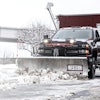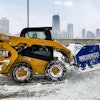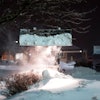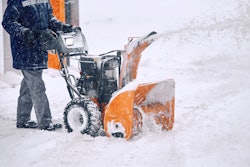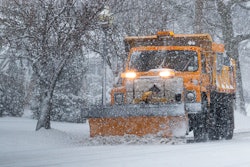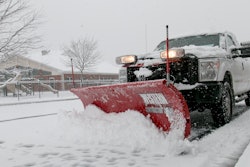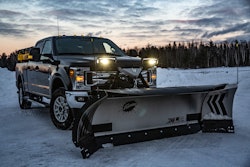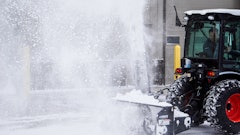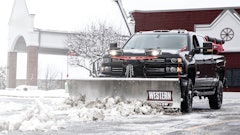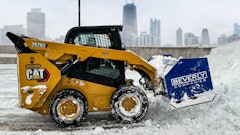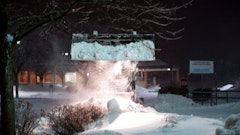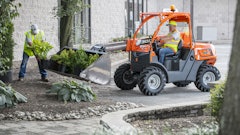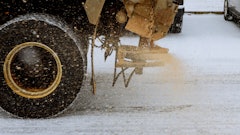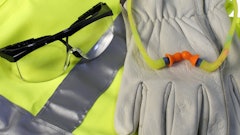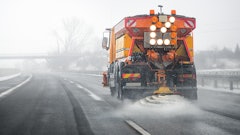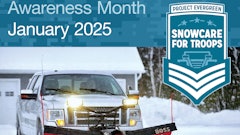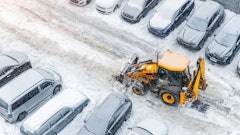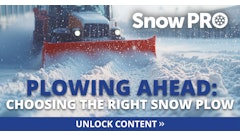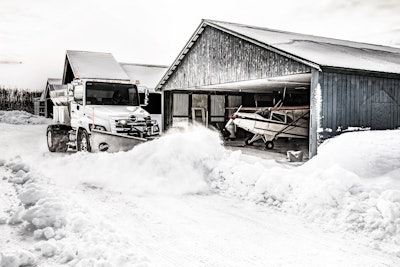
When it comes to the safety of your crew, it’s vital to follow standard best practices during snow removal operations—protecting not only your safety, but also pedestrians and drivers that may be on site during service. Once the blade drops and plowing begins, the safety and awareness of your surroundings are critical, but you must also take into consideration transportation safety to keep yourself, your truck and other motorists and pedestrians safe.
Find success this winter—safely—by proactively incorporating the following tips into your operations before (and after) you head out on the road.
Before heading out
Before you’re on site and plowing, you should always complete a basic safety inspection of your equipment. This will help increase the chances of completing each job incident-free.
Check vehicle safety ratings
Even when you are not plowing, you still have a heavy piece of equipment mounted on the front of your truck that changes how your vehicle performs. Check the label inside the driver’s side door corner post for the gross vehicle and axle weight ratings.
Depending on the axle weight ratings listed and the weight of your vehicle (including plow, occupants, ballast and cargo), you may need to add weight, or ballast, behind the rear axle to ensure the axle ratings are not exceeded or to distribute weight evenly.
Complete basic inspection
Nobody wants to be stranded on the side of the road, so check the engine oil, brake fluid, transmission fluid, battery, radiator coolant and windshield washer fluid. Something as simple as running out of windshield fluid can be inconvenient or leave your vision obscured enough to cause an accident.
Finally, check the tire pressure each time you go out, and add air as needed—especially when conditions are poor. Each tire needs to have good contact with the road.
Safety during transport
Remember, always make your blade adjustments before you start driving. Never do it while you’re driving. Make sure the blade is positioned correctly. With a straight blade, angling it to the right is one way to do this. With a wing plow, make sure it’s in a retracted position. Once your blade is positioned, you should turn off the plow controls for transport. Then, check to see if the blade is not in the way of the auxiliary plow headlights and won’t hit passing snow banks.
If you see your vehicle’s temperature rising, remember that the plow could prevent cool air from flowing past the radiator. Pull over right away and raise or lower the blade to clear the way for air to get to the grille.
Four-wheel drive
Four-wheel drive is an incredible tool to have on your side, but remember that it doesn’t make you invincible. Always buckle up and keep your speed at 45 mph or under. Check your vehicle’s manual for instructions on when and when not to engage four-wheel drive.
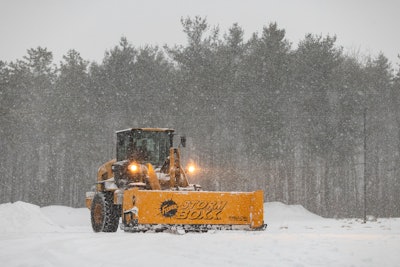 Douglas Dynamics
Douglas Dynamics
During snow removal
Once you’ve checked out your equipment and properly prepared, it’s time to get out on the road while staying mindful of your surroundings at all times.
Preseason site visit
Make sure you visit each job site to become familiar with the properties you’re servicing. Training should include studying site maps that have been created, noting relevant problem areas, where to stack snow and potential melt/refreeze spots.
Pre-event site visit
Before every job, evaluate the area no matter how familiar you are with it. Vehicle and foot traffic could impact your ability to safely service the site and place snow where instructed on site maps.
Stacking snow best practices
- Plow with the blade in a straight forward (not angled) position. Plow forward and upward to create the piles.
- Piles typically should not exceed two times the height of the stacking equipment.
- Be aware of low-hanging power lines as you stack as contact can be dangerous.
- Avoid plowing snow across intersections of public streets. In many instances, this is illegal.
- Understand where snow cannot be stacked for environmental reasons (e.g., near stormwater management systems, etc.).
- If stacking with heavy equipment, have properly outfitted spotters.
Potential problems while stacking snow
- Snow piles should be placed in areas to prevent runoff and refreeze in the pedestrian field as slopes and rains can cause water to flow onto walking surfaces and freeze.
- Stack snow on the exterior of the site when possible to avoid taking up valuable parking spaces and causing sight line issues. Never stack in or near handicapped spaces.
- Be mindful of lines of sight at the ends of parking lanes and from blowing and drifting snow from large piles. Never pile snow so high or wide that it obstructs the view of traffic.
- Inspect existing piles prior to operations, particularly in residential areas. Ensure children aren’t playing in and around the mounds since unstable stacks can collapse.
- Do not plow into entrance/exit lanes. Stacked snow can impede flow, forcing vehicles into oncoming traffic or cause congestion and accidents. Larger piles can obscure traffic signs, sight lines and curbs.
- Never stack snow against or around fire hydrants or other emergency access areas. Doing so can damage structures and limit first-responder access in the event of an emergency.
When you prepare before a job and are mindful of what to do during operations, you’re ready for just about anything that winter might bring.


